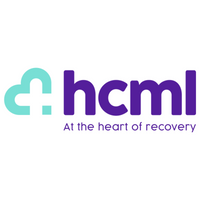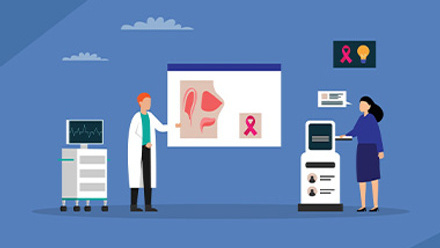How the Employment Rights Bill mandates measurable change for women’s health
The UK’s impending Employment Rights Bill is expected to bring a new chapter of accountability for employers, particularly around gender equity and women’s health in the workplace.
One of its key measures is the introduction of equality action plans for women’s health; a move designed to move businesses beyond data reporting and towards meaningful and measurable change.
The Employment Rights Bill will require employers with 250+ employees to publish annual gender equality action plans by 2027, including measures to address the gender pay gap and support employees through the menopause and menstruation.
The Bill aims to promote women's health in the workplace by mandating evidence-based action plans.
For employers, the changes present a significant opportunity to give women better support in the workplace. If done well, these plans will help create healthier, more inclusive workplaces, which support long-term organisational performance.
But achieving that outcome requires careful planning, honest reflection, and a genuine commitment to action.
For many organisations, reporting on gender pay gaps or diversity metrics has become standard practice. Yet reporting alone has rarely driven significant change. The new requirement signals a shift from compliance to action, with a clear expectation that employers will not only identify inequalities, particularly when it comes to women’s health, but take steps to address them.
Implementing measurable change
Establishing a clear starting point essential. Without an accurate understanding of the current state of equity and health provision, it is difficult to track progress effectively.
Employers need to examine the data they hold, review their existing policies and support mechanisms, and identify both strengths and where there are gaps.
Creating equity in the workplace is not just a moral imperative; it is also good for business. Employees who feel valued and supported, with accessible healthcare, flexible policies, and open communication channels, are more engaged and more likely to stay with the organisation for longer.
For women in particular, health and career journeys are often intertwined with unique challenges such as parental responsibilities, menopause, or chronic health conditions.
Without support, these factors can create barriers to progression and contribution. With it, businesses gain the full benefit of their talent, from early-career employees through to senior leaders.
Building an effective plan
Successful action plans must be evidence-based and ideally created with input from the people they are designed to support.
The process begins with discovery: reviewing existing initiatives, analysing usage, and assessing available data, from pay gap reporting to sickness absence and engagement surveys.
Where data is lacking, employers may need to introduce new channels, such as employee engagement sessions or anonymous feedback forums, to help build a complete picture.
The design phase should be inclusive. Plans are most effective when they are shaped by the people within the business, incorporating both female and male perspectives. Anecdotal evidence, combined with hard data, offers a powerful basis for creating initiatives that employees trust and value.
Implementation should focus on visible, practical support rather than perfection. This may include creating confidential health champions or peer forums so that employees can safely discuss sensitive issues, as well as better promoting existing resources to ensure they are widely understood and accessible.
Flexibility will also be key, ensuring employees have the time and space to access healthcare without stigma or fear of lost productivity.
Finally, meaningful change relies on regular monitoring, reviewing success and evolving initiatives to align with the workforce. Metrics, employee feedback, and engagement data all help ensure initiatives remain relevant and effective.
Employers should accept that the process will evolve over time; what matters is maintaining momentum and demonstrating that the organisation is committed to continuous improvement.
Driving cultural change
Leadership is critical in embedding cultural change. When senior leaders are visible in their own use and support for women’s health initiatives, it normalises conversations around topics that have traditionally been considered private or even taboo. This visibility not only signals permission to speak openly but also helps foster trust across the organisation.
Mentoring and sponsorship programmes can also make a significant difference, particularly in supporting women as they navigate the challenges of balancing career progression with family or health responsibilities. Providing these forums creates space for shared experiences and helps to build confidence among women aspiring to leadership roles.
It is important to recognise that progress will vary by sector. Some industries, particularly those with strong professional networks, are already further along in supporting women’s health and leadership development.
UK industries and sectors that have demonstrated notable leadership in promoting women’s equity in the workplace include accommodation and food services, the information and communication sector and the real estate industry, according to recent research from Skillcast.
For other industries, which perhaps historically have had fewer women employees, the requirements introduced may feel entirely new. The key is to begin with achievable steps, building credibility and momentum over time.
Looking ahead
Cultural change is complex and cannot be rushed. Tokenistic, short-term actions rarely deliver lasting results. The introduction of equality action plans is an opportunity to make deliberate, considered changes that will have long-term impact.
Employers should start now by reviewing the data they hold, engaging with employees to understand their needs, and taking realistic, practical steps to address the gaps they identify. By building plans that are inclusive, evidence-based, and continuously reviewed, organisations can make genuine progress towards equity.
Supporting the health and wellbeing of employees is not just a compliance exercise, it’s an investment in the long-term health, productivity, and resilience of the business itself and an essential step in creating workplaces where everyone can thrive.
Supplied by REBA Associate Member, HCML
HCML is a health and wellbeing provider, offering integrated and personalised healthcare solutions.








